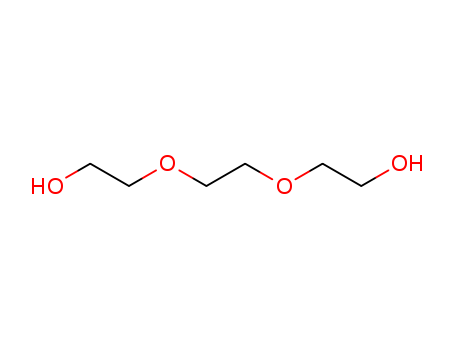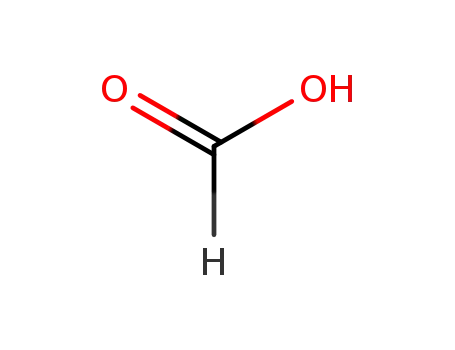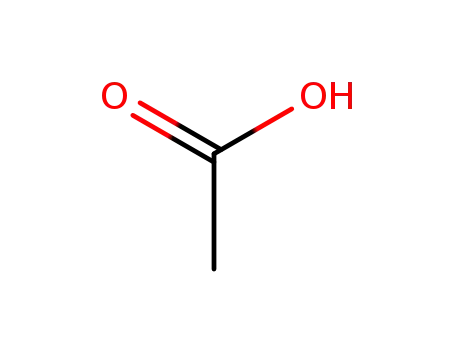Your Location:Home > Products > Fine Chemicals > Triethylene Glycol


CasNo: 112-27-6
Molecular Formula: C6H14O4
Appearance: clear liquid
|
112-27-6 Name |
|
|
Name |
Triethylene Glycol |
|
Synonym |
TRIGLYCOL;TRIETHYLENE GYCOL;Triethylenglycol;TRIETHYLENE GLYCOL extrapure;TRIETHYLENE GLYCOL extrapure AR;2,2'-(1,2-Ethanediylbis(oxy))bisethanol;2,2’-(1,2-ethanediylbis(oxy))bis-ethano;2,2’-(1,2-ethanediylbis(oxy))bisethanol |
|
112-27-6 Biological Activity |
|
|
Related Catalog |
Research Areas >> Cancer Signaling Pathways >> PROTAC >> PROTAC Linker |
|
Target |
PEGs |
|
References |
[1]. An S, et al. Small-molecule PROTACs: An emerging and promising approach for the development of targeted therapy drugs. EBioMedicine. 2018 Oct;36:553-562. |
|
112-27-6 Chemical & Physical Properties |
|
|
Melting point |
−7 °C(lit.) |
|
Boiling point |
288.0±0.0 °C at 760 mmHg |
|
Density |
1.1±0.1 g/cm3 |
|
Molecular Formula |
C6H14O4 |
|
Molecular Weight |
150.173 |
|
Flash Point |
165.6±0.0 °C |
|
PSA |
58.92000 |
|
LogP |
-1.87 |
|
Exact Mass |
150.089203 |
|
Vapour density |
5.2 (vs air) |
|
Vapour Pressure |
0.0±1.3 mmHg at 25°C |
|
Index of Refraction |
1.451 |
|
Stability |
Stable. Combustible. Incompatible with strong oxidizing agents. |
|
Water Solubility |
SOLUBLE |
Triethylene Glycol (TEG) is a clear, colorless, viscous, stable liquid with a slightly sweetish odor, which is the third members of a homologous series of dihydroxyalcohols. It is produced in the Master Process by the direct hydration of ethylene oxide, co-produced with MEG and DEG, a colourless liquid. The main uses for triethylene glycol are based upon its hygroscopic quality. Triethylene glycol (TEG) is widely used in natural gas processing to avoid corrosion and plugging of the flow lines. It is also a dehumidifying agent in air-conditioning units. Triethylene glycol also has mild disinfectant qualities and, when volatised, is used for the simultaneous absorption of acid gas and water from natural gas.
Definition
ChEBI: A poly(ethylene glycol) that is octane-1,8-diol in which the carbon atoms at positions 3 and 6 have been replaced by oxygen atoms.
General Description
Colorless liquid with a mild odor. Dense than water.
InChI:InChI=1/C6H14O4/c7-1-3-9-5-6-10-4-2-8/h7-8H,1-6H2
A novel NaCl-assisted triethylene glycol (TEG) combustion strategy was adopted to prepare lithium manganese oxides (LMO) with hierarchical mesopores for energy storage. In this contribution, a novel NaCl-assisted triethylene glycol (TEG) combustion strategy was proposed to fabricate LMO with hierarchical mesopores.
A commonly used inhibition method is gas dehydration with triethylene glycol (TEG), which is the molecule of interest in this work.
Water vapour from the wet gas is absorbed into the liquid (glycol) solvent stream. Glycols which are commonly used as liquid desiccant are monoethylene glycol (MEG), diethylene glycol (DEG), triethylene glycol (TEG) and tetraethylene glycol (TREG) (Affandy et al., 2020).

pentaethylene glycol


formic acid


Tetraethylene glycol


Pentaethylene glycol


ethylene glycol


acetic acid


diethylene glycol

![2,2'-[1,2-ethanediylbis(oxy)]bisethanol](/upload/2023/1/a7b9d73b-bd9c-4b32-80d6-6b9e1e1e69e5.png)
2,2'-[1,2-ethanediylbis(oxy)]bisethanol
| Conditions | Yield |
|---|---|
|
With titanium(IV) oxide; In water; for 24h; Concentration; UV-irradiation;
|

iodine


diethylene glycol


Tetraethylene glycol


Pentaethylene glycol

![2,2'-[1,2-ethanediylbis(oxy)]bisethanol](/upload/2023/1/a7b9d73b-bd9c-4b32-80d6-6b9e1e1e69e5.png)
2,2'-[1,2-ethanediylbis(oxy)]bisethanol
| Conditions | Yield |
|---|---|
|
at 190 ℃;
|

oxirane

ethylene glycol

diethylene glycol

ethylene dibromide

Tetraethylene glycol

n-heptane

(ethane-1,2-diylbisoxy)bis(ethane-2,1-diyl) diacetate

2,2-dimethyl-1,3,6,9-tetraoxa-2-sila-cycloundecane